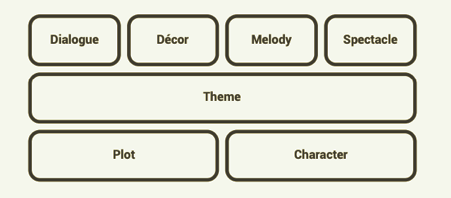Prologue
This week was a little different than normal, as this week we had a guest lecture by David Henderson Design about storytelling.
Why is Storytelling Important in Design?
Storytelling describes the social and cultural activity of sharing stories, sometimes with improvisation, theatrics, or embellishment. Every culture has its own stories or narratives, which are shared as a means of entertainment, education, cultural preservation or instilling moral values. We have always been told about the importance of creating an emotional connection with our audience. Storytelling predates writing. The earliest forms of storytelling were usually oral combined with gestures and expressions. In addition to being part of religious rituals, some archaeologists believe rock art may have served as a form of storytelling for many ancient cultures.
As we learn about our world through metaphors, not bullet-point specifications, storytelling is the best way to relate to audiences. Effective storytelling means going beyond getting users emotionally invested, to keeping them engaged after their experiences, too, so they attach more meaning to our products/services.
1. Story That Engages The Users
2. The Logic
4. Words vs Images
5. Users as Characters
6. The Reward Game
7. Interactive Value
8. Active Visuals
10. The Bigger Picture
11. Power Of Context
Aristotle’s 7 Elements of Good Storytelling

Good stories inevitably involve conflict. Storytelling in design requires you to make users the hero and envision how they can overcome a specific problem using what you’ll offer them. So, start by defining their aims, and clearly plan “user journeys” steps showing how users might encounter and handle your design in order to achieve goals. The power of storytelling becomes obvious after looking harder at users’ contexts.
The psychology of storytelling
I decided to also look at the psychology behind storytelling, I found some really interesting points.
The art of powerful storytelling. Everyone has stories to tell, but storytelling is a skill that can be developed and as a tool it can be used to powerful effect.
Developed and used purposefully, storytelling can contribute to inclusion and connection, build confidence, and bring about change.
Stories communicate values, beliefs, hopes, fears, and dreams of a people in a way that engenders respect and understanding in the listener.
The art of storytelling has a psychological and neurological basis that explains our natural human predilection for narrative.
- Stories have always been a primal form of communication. They are timeless links to ancient traditions, legends, archetypes, myths, and symbols. They connect us to a larger self and universal truths.
- Stories are about collaboration and connection. They transcend generations, they engage us through emotions, and they connect us to others. Through stories, we share passions, sadness, hardships, and joys.
- Stories are how we think. They are how we make meaning of life. Call them schemas, scripts, cognitive maps, mental models, metaphors, or narratives. Stories are how we explain how things work, how we make decisions, how we justify our decisions, how we persuade others, how we understand our place in the world, create our identities, and define and teach social values.
- Stories provide order. Humans seek certainty and narrative structure is familiar, predictable, and comforting. Within the context of the story arc, we can withstand intense emotions because we know that resolution follows the conflict. We can experience with a safety net.
- Stories are how we are wired. Stores take place in the imagination. To the human brain, imagined experiences are processed the same as real experiences.
- Stories are the pathway to engaging our right brain and triggering our imagination. By engaging our imagination, we become participants in the narrative. We can step out of our own shoes, see differently, and increase our empathy for others.
Overall I now fully understand how storytelling can be a really powerful tool to help immerse our user into our product/service. Implementing it may not be as hard I thought it would originally be.